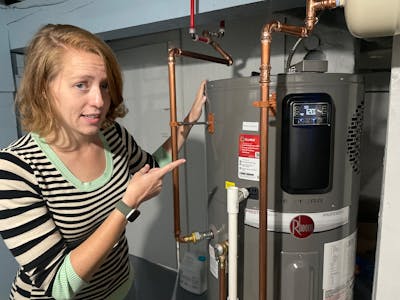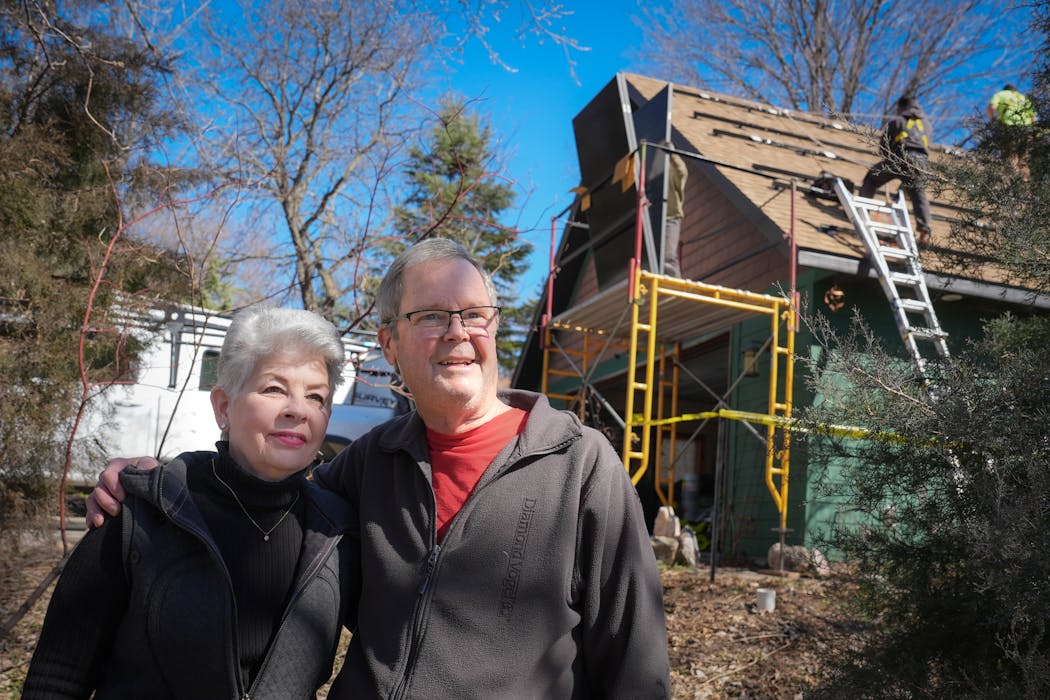BBright sun illuminated the roof of Richard and Sheila Miller's Golden Valley house as workers passed solar panels up scaffolding.
TruNorth Solar was busy assembling the family's second array, replacing one installed about 10 years ago after a storm damaged their roof.
"It was a pretty fast payback, and to me, it's just kind of a no-brainer," Richard Miller said in early April. "It's pretty clear that we need to do something to stop burning our fossil fuels, and this is one way for us personally to do some of that."
The Millers are one example of Minnesotans taking part in solar energy as a way to care for the environment while potentially saving some money. They chose to install their own solar panels, but there are other options as well — including community solar gardens and paying extra on your monthly bill to support solar programs — to fit other budgets and lifestyles.
YOUR CARBON FOOTPRINT
On this Earth Day, the Star Tribune offers a guide to the many ways you can take action today to reduce your carbon footprint.
While Minnesota's electric grid is relying less on fossil fuels every year as utilities march toward a carbon-free system by 2040, more people choosing climate-conscious options can help add more clean power now.
But finding the option that works for you can take some research. It also usually depends on your goals and personal financial situation, said Carmen Carruthers, outreach director for the Citizens Utility Board of Minnesota.
"Those two things tend to drive the initial decisionmaking," she said.
Here's what you need to know about adding more solar power to your life.
Up on the rooftop
If saving money is your primary reason for going solar, installing a rooftop array could be the best choice.
Carruthers said that, depending on your utility, it presents the greatest opportunity for long-term energy savings because after you pay for the panels, "what you're generating and using is basically free."
There are hurdles, however. One is the upfront cost.
TruNorth President Marty Morud said the average residential system is between about $28,000 to $32,000. Miller said his setup is a particularly large array, costing about $43,000.
However, Morud said there are projects as low as $10,000 to $12,000. Tax breaks and other incentives can also cut the cost. A federal clean energy credit equals 30% of the cost of qualifying home clean energy projects, including solar panels.
Once installed, Morud said it usually takes eight to 12 years for the electric bill savings to break even with the price of installation. That was the case for Miller, who said they crossed that threshold after about eight years. Morud made the case that it takes less time to beat the cost of what you would have paid in electric bills without the solar.
Then, there's the roof.
Joel Haskard, co-director of Minnesota's Clean Energy Resource Teams (CERTs), said it's important to have a roof with zero or limited shade and a "south-ish" facing angle, though Morud said energy savings are possible on some east-west facing roofs. Haskard said it doesn't make sense to put solar on an old roof.
Miller said his solar panels survived the storm, but he had to replace them along with the roof because they were no longer up to code. The new system is good for 25 years, he said.
Carruthers encouraged people to research and shop around with developers for several bids. CERTs keeps a list on its website of solar installers and questions to ask those companies, such as how much energy the system will produce and what the value of that energy saved and generated is.
Haskard said financial incentives are better for people in the Twin Cities metro area compared with some other parts of the state. Banks aren't the only option for financing projects; Morud recommended rates at the nonprofit Center for Energy and Environment.
To Miller, the climate and long-term financial benefits were worth the hassle. The family also put panels on a rental house they own about five years ago.
"I would not hesitate to put them on anywhere," Miller said, adding one big caveat: "Where the sun shines."
Communal use
If you're not ready or able to put up your own panels, you can still go solar by "subscribing" to a community solar garden, a larger-scale installation.
In the case of Xcel Energy's program, the largest in the state, you will sign a separate contract with a third-party operator. You'll pay two electric providers but will probably pay less for your electricity going forward.
Minnesota's solar garden program was created by the Legislature in 2013 to allow renters and others to help with the energy transition, said Eric Pasi, CEO of Minneapolis-based community solar developer Enterprise Energy.
Pasi estimated Xcel customers who subscribe to solar gardens will get a 10% to 20% cut in electric bills. But outside Xcel territory, subscribers might pay a premium for community solar, Haskard said.
The first step in subscribing to community solar is to check whether your electric utility has a program, Pasi said.
Choosing a solar garden company may be the hardest part. There are lists maintained by solar developers and Clean Energy Resource Teams.
When choosing a third-party operator, pay attention to what kind of savings they're promoting and what numbers they're using to justify that, Carruthers said. Consider whether you're OK with signing up if the expected savings don't materialize.
Also make sure you ask when the garden is projected to start operating.
In the past, some would-be subscribers have been reluctant to sign the contracts, which under the Xcel program have often been as long as 20 years to ensure the financing of the solar garden. Pasi said shorter contracts are available now as garden operators and their underwriters have learned more about the economics of the system.
The Minnesota Department of Commerce recommends 10 questions to ask, such as whether your payment to a solar garden operator will increase over time.
Minnesota lawmakers overhauled the Xcel program last year in an effort to ensure it ties more of the energy and savings to residential customers, not large commercial subscribers. Projects under the new rate scheme aren't operating yet as utility regulators write the rules for the program. But people can subscribe to gardens that are in the works.
Pay for it
If your goal is to support clean power more than save money, perhaps the easiest option is paying extra to a utility for voluntary programs. Nearly 64,000 people subscribe to Xcel's Renewable Connect Flex, which spokesman Theo Keith said is usually $6 to $8 more on monthly bills. Xcel uses that revenue to build out wind and solar projects.
There is generally not a big difference between the climate benefits of rooftop solar vs. community gardens, said Allen Gleckner, executive lead of policy and programs at the nonprofit Fresh Energy. Gleckner said bigger solar arrays benefit from economy of scale and can track the sun, but rooftop arrays are efficient and bring other benefits to the electric grid.
In Golden Valley, the Millers have taken other steps beyond their solar panels to reduce their carbon footprint, like electrifying home appliances and buying an electric car.
"Here's our motivation," said Sheila Miller, holding up a photo of the couple's grandchildren. "For their generation."














